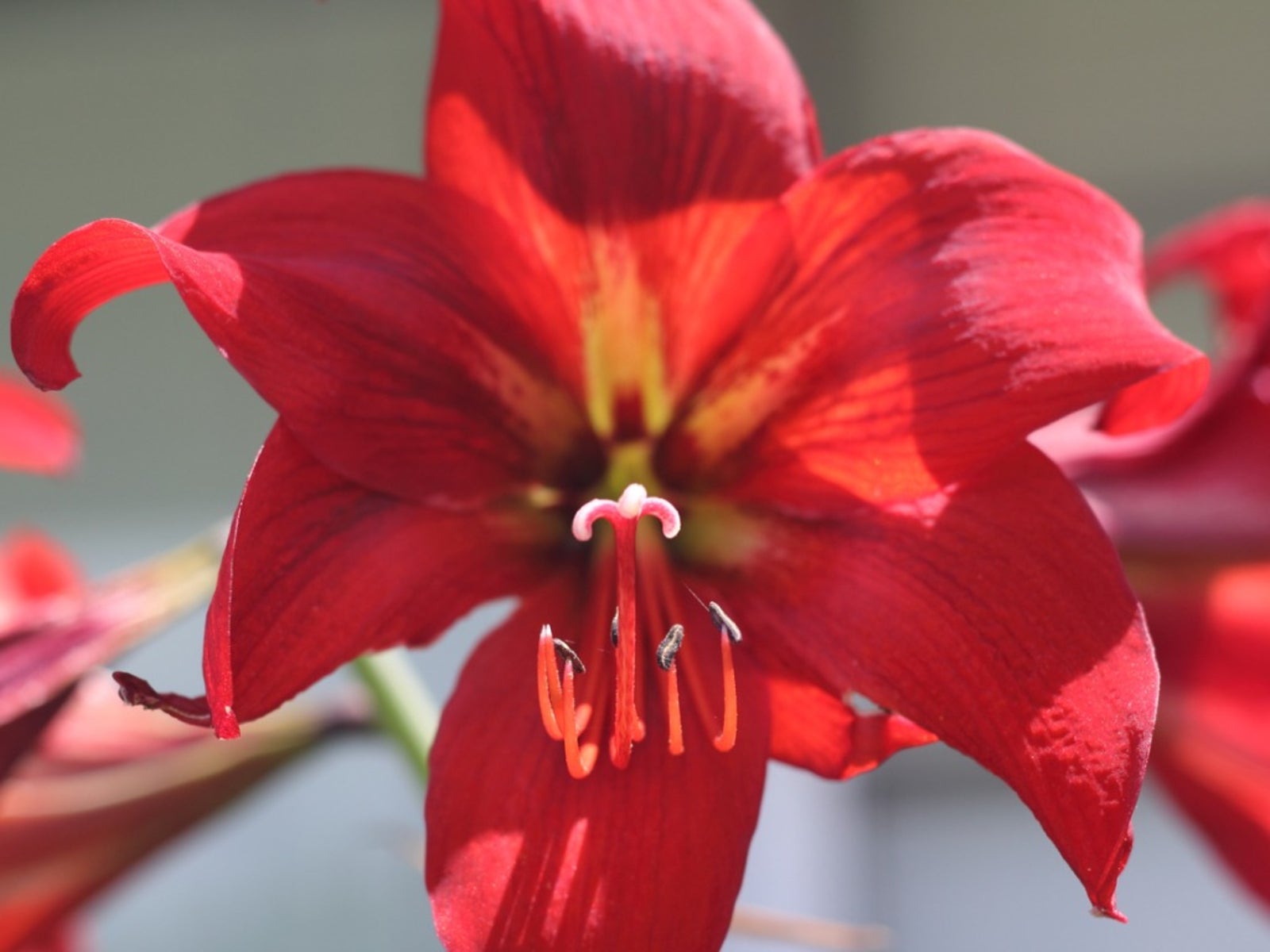Oxblood Lily Info: How To Grow Oxblood Lilies In The Garden


Tropical bulbs add exotic elegance to the landscape. Many of these are remarkably hardy, such as oxblood lily, which can withstand temperatures down to 10 degrees Fahrenheit (-12 C.). What is oxblood lily? This native of Argentina and Uruguay produces a stellar flower that is blood red and highly impactful. Northern gardeners down to zone 7 can try growing oxblood lilies in a sheltered location. Some tips on how to grow oxblood lilies can help you enjoy these astounding blooming bulbs.
Oxblood Lily Info
Oxblood lily (Rhodophiala bifida) is a fall blooming plant which goes dormant in summer. The blooms look similar to amaryllis, but the two plants are not related. Each bloom is only open for 2 to 3 days, but the flowering clump will produce for up to a month. The bulbs are not common in many parts of North America but can be found quite extensively in Texas where they were first introduced. Oxblood lily care is fairly specific, but the plant is extremely adaptable to different soil conditions and makes a bright and eye-catching addition to the autumn garden. In spite of this plant's slightly gruesome name, the lily is a marvel when it blooms. It was introduced by Peter Henry Oberwetter, who stumbled across some oxblood lily bulbs around the 1800's. As a collector, he became fascinated with the plants and allowed the bulbs to replicate. Today, the lily is mostly confined to certain areas of Texas where Oberwetter had his nursery beds. It is primarily a shared plant and not readily available at nurseries. Oxblood lily info indicates the plant is also known as schoolhouse lily. The deep color of the blooms is a magnet to hummingbirds, blooming at just around the time school starts in fall. They are also known as hurricane lily due to the timing of the blooms, which coincides with the storm season.
How to Grow Oxblood Lilies
Oxblood lilies are extremely adaptable to a wide range of soils. They can even thrive in heavy clay, but as with most bulbs, do not try growing oxblood lilies in boggy soils. They also tolerate alkaline to acidic soil. The plants are heat and drought tolerant but do require consistent spring rains to form foliage and flowers. Foliage emerges first and then dies back just prior to flowering. This bulb is hardy from United States Department of Agriculture zones 7 to 11. Full sun to partial shade locations are recommended. Select a location with 6 to 8 hours of sun per day. Flowers tend to last longer in areas with some protection from the hottest rays of the day. Late summer to early fall is the perfect time to install these beauties. Plant bulbs 3 inches (8 cm.) deep with the neck facing upward and at least 8 inches (20 cm.) apart.
Oxblood Lily Care
These bulbs appear to be short lived, often only blooming a couple of seasons. The bulbs naturalize readily and should be separated every couple of years, providing a consistent supply of the plants. Water them well for the first year but thereafter the plants can survive dry periods. Apply a 5-5-10 fertilizer in summer to promote big healthy blooms.
Gardening tips, videos, info and more delivered right to your inbox!
Sign up for the Gardening Know How newsletter today and receive a free copy of our e-book "How to Grow Delicious Tomatoes".

Bonnie Grant is a professional landscaper with a Certification in Urban Gardening. She has been gardening and writing for 15 years. A former professional chef, she has a passion for edible landscaping.
-
 Looking For Plants To Give You The Soft And Fuzzies? Try These 5 Fuzzy Leaf Plant Options
Looking For Plants To Give You The Soft And Fuzzies? Try These 5 Fuzzy Leaf Plant OptionsLovers of texture, drama, silver foliage and tactile plants will adore these special sensory garden additions. These fuzzy leaf plant options will leave you all aglow
By Susan Albert
-
 Get Ready For A Summer Of Hummers! Grow These Full Sun Hummingbird Plants and Flowers
Get Ready For A Summer Of Hummers! Grow These Full Sun Hummingbird Plants and FlowersIf you’re lucky enough to enjoy a sunny backyard, make sure you are maxing out on your pollinator opportunities and grow these full sun hummingbird plants and flowers
By Tonya Barnett